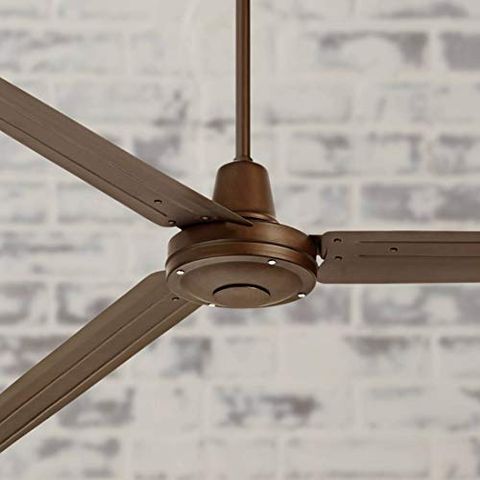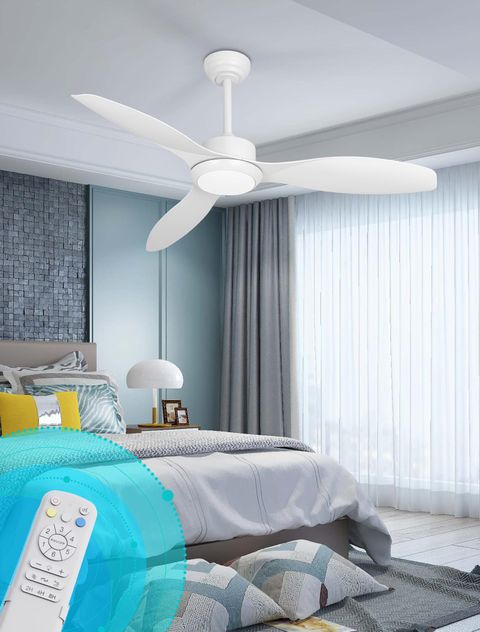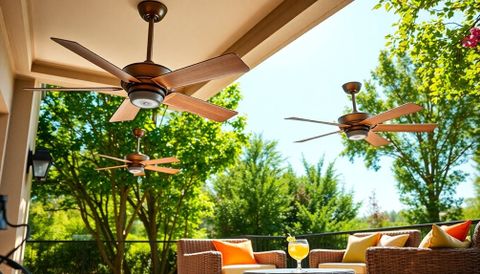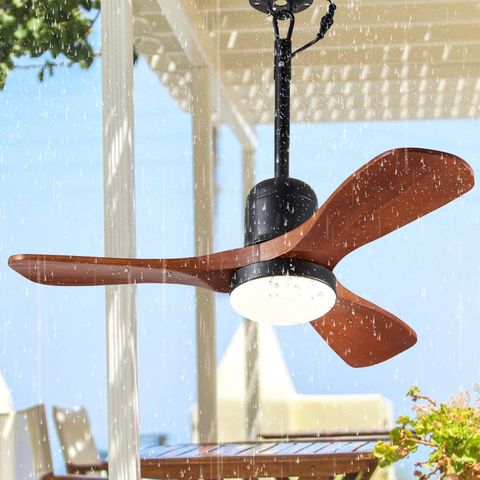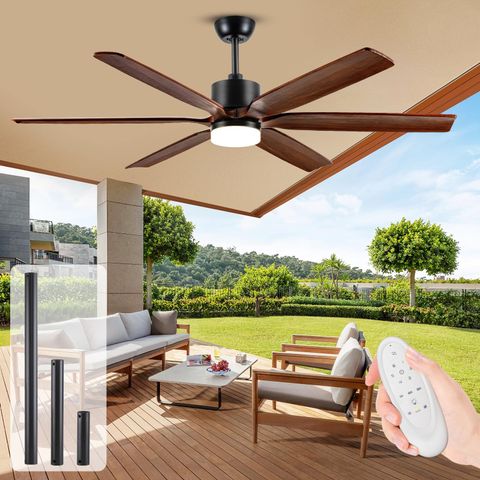Picture this: you’re in a coastal town where the ocean breeze carries salt and spray, where thunderstorms roll in without warning, and where the humidity seems to cling to everything. You want a fan to keep you comfortable, but you’re worried about rust, corrosion, and water damage. This guide will walk you through everything you need to know about picking fans that can handle the tough conditions of seaside living.
Living near the coast or in areas prone to frequent rainfall means your fan needs to be tougher than the average indoor model. The salt in the air, high humidity, and unexpected showers can quickly turn a perfectly good fan into a rusted relic. But don’t let that discourage you from finding the right solution. With the right approach, you can find fans that will keep you cool even in the most challenging weather conditions. It’s all about understanding what makes a fan suitable for coastal environments and how to spot those features before you buy.
Understanding Coastal Environmental Challenges
Coastal climates present unique obstacles that regular fans simply aren’t built to handle. The salt particles in the air don’t just settle on your skin – they also accumulate on fan blades, motors, and electrical components. Over time, this salt exposure leads to corrosion, which can cause fans to malfunction or break down entirely. Humidity plays its part too. High moisture levels can cause wooden parts to warp, electronic components to short-circuit, and metal parts to rust. When it comes to rainy regions, you’re dealing with the added challenge of water ingress. Even fans designed for outdoor use need protection from direct water contact. Think about how many times you’ve seen someone try to use an indoor fan during a sudden shower, only to have it stop working after a few minutes of exposure. That’s why understanding these environmental pressures is the first step toward choosing the right fan for your situation.
Material Selection for Longevity
The materials used in fan construction matter enormously when you’re dealing with coastal conditions. Look for fans made with marine-grade aluminum or stainless steel. These metals resist corrosion much better than regular steel or plastic. Some manufacturers specifically use 304 or 316 grade stainless steel for their outdoor models. Aluminum is another excellent choice because it doesn’t rust and maintains its strength even when exposed to salt air. When examining a fan, check if the motor housing is made from corrosion-resistant materials. Plastic parts may seem lighter, but they often degrade faster in salt environments. The blade material is equally important. Some fans feature plastic blades that can crack in extreme temperatures, while others use composite materials that stand up well to weather changes. Consider how much maintenance you’re willing to do versus how long you want your fan to last. A higher-quality material investment upfront can save you money on replacements later.
Weatherproofing and Protection Ratings
When shopping for coastal fans, pay attention to IP ratings and weatherproofing certifications. IP stands for Ingress Protection, and it tells you how well a device resists dust and water. An IP54 rating means the fan can handle splashing water from any direction, which is great for outdoor patios. For areas that get heavy rain, look for IP65 or higher ratings. These provide better protection against water jets and dust. Some fans are specifically labeled as "marine rated" or "outdoor rated," which often indicates they meet additional standards set by maritime industries. Remember that no fan is completely waterproof, but these ratings give you an idea of what to expect. Also, check if the fan has a protective cover or housing that shields sensitive components. A well-designed outdoor fan will have a sealed motor compartment that keeps water out. Don’t forget to consider whether the fan can handle temperature fluctuations, which can cause expansion and contraction that might lead to component failure.
Motor Quality and Performance Considerations
The heart of any fan is its motor, and in coastal environments, this becomes even more critical. Look for fans with permanent split capacitor motors or shaded pole motors that are designed for continuous operation. These types of motors tend to run cooler and last longer under demanding conditions. Some premium fans feature sealed motors that protect against moisture and salt intrusion. These motors often come with extended warranties because they’re built to withstand harsher conditions. Check the motor size too – larger motors typically offer better performance and durability. However, they may also consume more energy. Consider the airflow requirements of your space. A fan that’s too small won’t provide adequate cooling, while one that’s oversized might be unnecessarily noisy. Also, think about how the motor handles humidity. Motors that operate efficiently in high humidity levels are essential for coastal climates. Some manufacturers offer special coatings or treatments for motors that improve their resistance to moisture and salt.
Installation and Mounting Solutions
Where you plan to install your fan matters just as much as what you choose to buy. For coastal areas, mounting options become more important due to potential wind loads and vibration issues. Look for fans designed for outdoor installation that include appropriate mounting hardware. Some fans require special brackets or mounting systems that account for salt corrosion. If you’re installing on a deck or patio, consider how wind might affect the fan’s stability. Fans installed in areas with strong winds need extra reinforcement to prevent damage from vibration. Check if the fan includes a mounting bracket that can accommodate different wall or ceiling types. Some coastal fans come with adjustable mounting options to handle various installation scenarios. You’ll also want to consider how easy it is to access the fan for maintenance or cleaning. A fan that’s hard to reach may end up gathering salt and debris, leading to premature wear. Make sure the installation location allows for proper ventilation around the motor to prevent overheating.
Maintenance and Long-term Care
Even the best fans need some care to last in coastal conditions. Regular cleaning is essential – salt deposits can build up over time and reduce efficiency. Most coastal fans benefit from monthly cleaning with fresh water and mild soap. Be sure to dry all surfaces thoroughly after cleaning, especially around electrical connections. Check the fan regularly for signs of corrosion or wear, particularly on moving parts. Lubricate bearings according to manufacturer recommendations, which may be more frequent in coastal environments. Some fans come with special maintenance kits or replacement parts designed for coastal use. Keep spare blades or components on hand, especially if you live in an area with frequent storms that might cause damage. Understanding how to properly maintain your fan can extend its life by years. Many coastal homeowners find it helpful to establish a seasonal maintenance routine that includes checking for loose parts, cleaning blades, and inspecting wiring. Remember that preventive maintenance is always cheaper than replacement costs.
Choosing the right fan for coastal or rainy regions isn’t just about picking something that looks good. It’s about investing in durability and performance that can handle the elements. You need to balance cost considerations with long-term value, remembering that a slightly more expensive fan with proper materials and weatherproofing can save you money on replacements down the road. Take time to research the specific conditions of your environment and match them with the right fan specifications. Whether you’re setting up a fan for your beach house or protecting your garden shed, the principles remain the same. Pay attention to materials, ratings, motor quality, and maintenance needs. With the right approach, you’ll find a fan that keeps you comfortable while standing up to whatever Mother Nature throws at it. The key is being prepared for the challenges ahead rather than waiting until something breaks.

